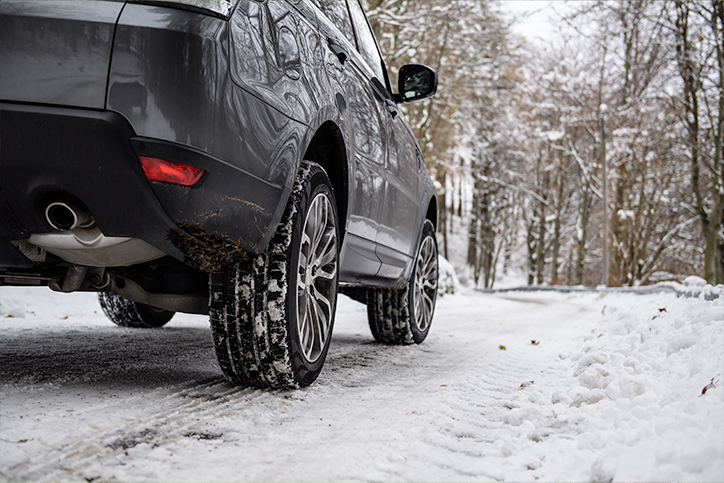Mythbusters: How should you *really* drive in winter weather? | PEMCO
.png) How many times have you heard people say things like, "It's best to get a run at a snowy hill. Momentum will carry you up!" Or, "Braking will jolt your car out of a skid when the roads are slick." And of course there's the age-old piece of advice to "use your high-beams in thick fog."
How many times have you heard people say things like, "It's best to get a run at a snowy hill. Momentum will carry you up!" Or, "Braking will jolt your car out of a skid when the roads are slick." And of course there's the age-old piece of advice to "use your high-beams in thick fog."
It's hard to know...who's actually right? What should we *really* do when navigating precarious winter driving conditions? Sometimes, all of the advice out there seems to contradict itself!
Look no further. In this issue of PEMCO Mythbusters, our experts will bust these myths and let you know the safest way to drive in winter weather. Read on to learn if the myths you've been hearing are indeed true...or false.
Winter driving myths get handed down from generation to generation. Some were always wrong. Others started out as fact and have become outdated with advances in car and tire technology. Starting with the four above, here are 10 myths worth de-bunking:
MYTH #1: It's best to "get a run" at a snowy hill so momentum will carry you up.
FACT: Approach a snowy hill at a controlled, steady speed – not too slow, not too fast – and hold it until you reach the top. If possible, time your ascent so it's unlikely you'll be stopped at a red light midway. An even better idea: Plan your route to avoid hills in snowy conditions whenever possible. (These Seattle drivers learned the hard way during 2022's ice storm.)
MYTH #2: Braking will jolt your car out of a skid.
FACT: Braking likely will add to your loss of control. If you feel your car starting to skid, avoid the brake and steer the car in the direction you want to go. That is, if the rear wheels are sliding to the right, that means the front of the car will be pointing slightly left. Turn your wheels gently to the right to straighten the car. Once you regain control, take your skid as a sign you need to slow down.
MYTH #3: Use high beams in fog.
FACT: You'll be able to see the road more clearly if you use low beams or, if your car is equipped with them, fog lights (which sit even lower).
MYTH #4: Let some air out of your tires to improve traction.
FACT: Running your tires at anything other than manufacturer's recommendations can create uneven tire wear, reduce performance or even put you at risk for a blowout. A better solution: Switch to winter tires to improve your grip on the road and keep your speed down.
MYTH #5: Cruise control helps you maintain a safe speed in slick conditions.
FACT: The automatic acceleration or downshifting of cruise control can cause you to lose traction in slippery conditions. There's some debate about whether cruise control can cause loss of control on wet roadways, but at minimum, it will slow your ability to recognize and react to changes in road conditions. We like to say "wipers on, cruise control off."
MYTH #6: Pump the brakes if you skid on a wet roadway.
FACT: That's true only if you're driving a vintage car without antilock brakes. If your car has antilock brakes, brake normally.
MYTH #7: Stay in the far right lane if it's raining.
FACT: Most roads are "crowned" slightly, so rainwater runs to the outside. Middle lanes tend to have less water built up on them than outside lanes, which are more prone to puddling. Driving in the tracks of the vehicle in front of you also reduces your chances of hydroplaning, since that vehicle's tires displace water.
MYTH #8: You should always warm up your car in winter.
FACT: That was true in the days before fuel injectors. For modern cars, advice ranges from no warm-up at all to only about one minute. If you leave your car running unattended in the driveway, you make yourself a target for "puffer" theft.
MYTH #9: There's no point in washing your car during the winter.
FACT: Although it's true your car won't stay showroom shiny for long, winter washes are worth it to remove road salts, which contribute to rust. You also want to keep your headlights and taillights clean, since a coating of road grime can dramatically reduce brightness. Take care about washing in extremely cold weather, though, since leftover wash water could freeze up under your wiper blades and around locks and doors.
MYTH #10: You only need winter tires on your drive wheels.
FACT: Use the same tires all the way around. You maintain the best stability and control if all your tires are the same design and tread depth.
So, how did you do? Did you ever believe any of these winter driving myths? Whether they were handed down from generation to generation, or started as fact and have become outdated with advances in car and tire technology, ALL of the above driving myths are wrong.
As winter weather begins to pick up in the Pacific Northwest and beyond, we hope you'll have a season of safe, mishap-free driving.
Share on social media